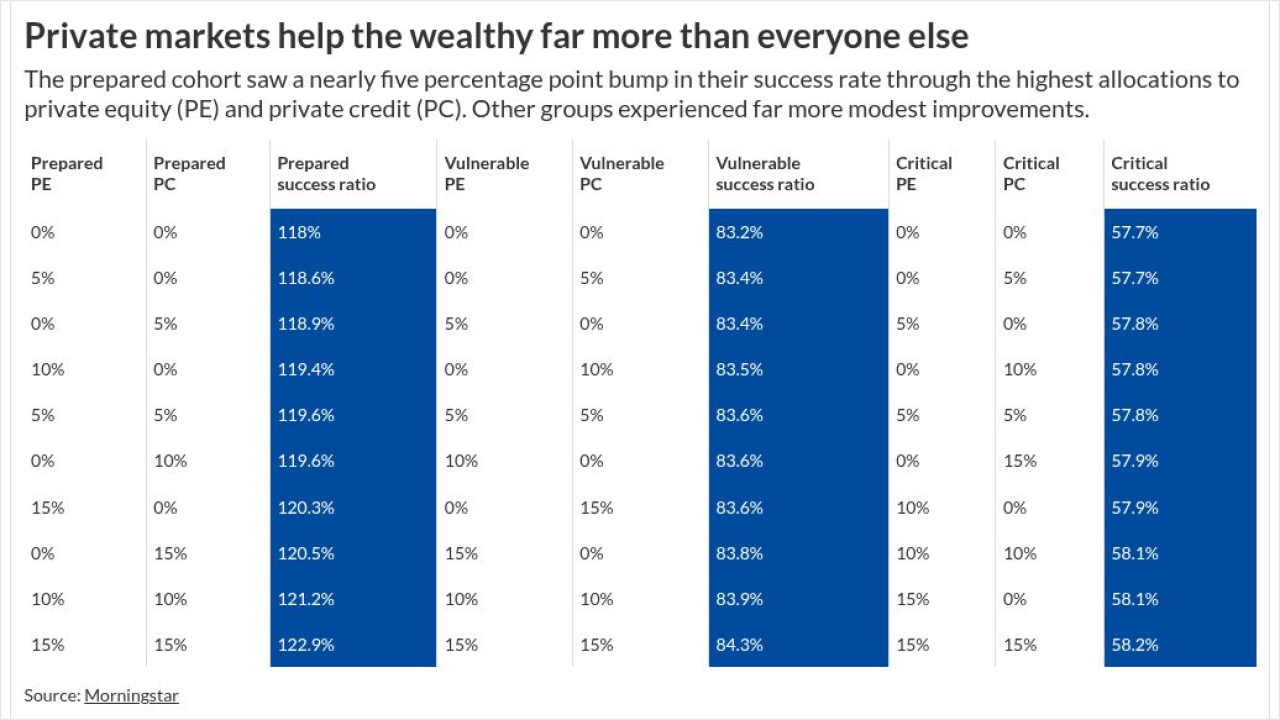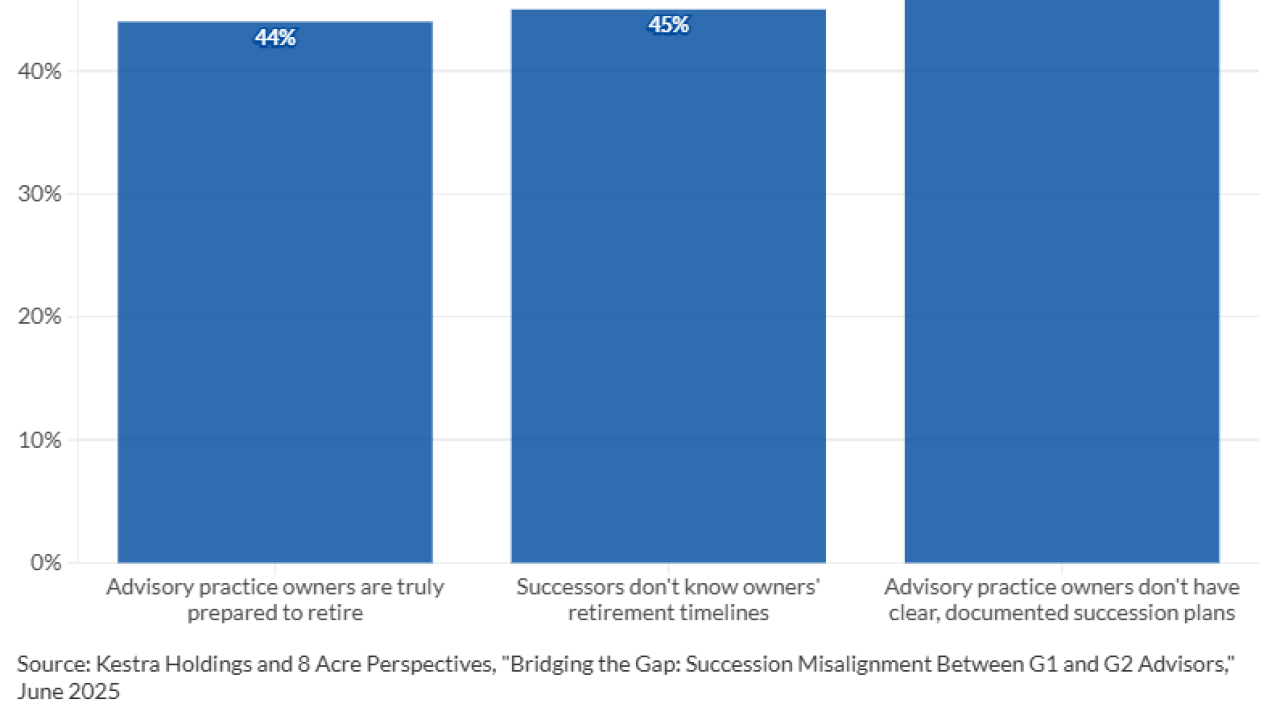
One of the most hotly debated issues in the retirement planning community has been whether a client with pretax and after-tax employer-plan money can roll it over in two parts — moving that after-tax cash to a Roth IRA tax-free, that is, while also directly moving the pretax money into a traditional IRA.
In the past, the IRS had issued several ambiguous and contradictory rulings that wound up clouding the issue, creating more doubt as to whether after-tax plan funds could be converted to a Roth IRA tax-free. But a new IRS notice provides an emphatic answer: Yes, they can.
The agency released Notice 2014-54, Guidance on Allocation of After-Tax Amounts to Rollovers this fall. The most important takeaway for advisors is clearly the ability of clients with both pre- and after-tax money in their employer plans to allocate the two portions of distributions to different retirement accounts. Although the notice says it will generally apply to distributions taken in 2015 or later, it also says taxpayers can apply a reasonable interpretation of the existing rules. Practically speaking, the guidance is effective immediately.
While the allocations can theoretically be made to any type of retirement account, the most beneficial plan for clients will be to funnel the pretax portions of a distribution — say, those from a 401(k) — to a traditional IRA rollover and, at the same time, allocate the after-tax funds to a Roth IRA conversion.
By doing so, clients will be able to retain the tax-deferred status on the pretax portions of their distributions and simultaneously convert the after-tax portions of their plan distributions, tax-free.
HOW IT WORKS
For example, consider a worker who has $100,000 in a traditional 401(k) and has just left his job. His plan balance consists of $80,000 of pretax salary deferrals and cumulative earnings, and $20,000 of after-tax contributions. He is eligible to take a distribution of any portion of his 401(k) funds.
Now, he could move the entire $100,000 to an IRA tax-free via a direct rollover, which would retain the tax deferral on the entire distribution — but future earnings on both the pre- and after-tax money in his traditional IRA would be taxable when distributed. In addition, his IRA distributions would generally be subject to the pro rata rule, meaning that a portion of each withdrawal would contain both taxable and tax-free funds.
Instead of choosing to roll over his entire distribution to a traditional IRA, he would probably be better off splitting his distribution — having the pretax portion sent to his traditional IRA, while having the after-tax portion converted tax-free to his Roth IRA.
The new IRS guidance not only allows this, but it also gives a free pass to those who engaged in such transactions in the past. Note that the client will have to tell the plan administrator how he wants the funds allocated, though, because it affects the plan’s reporting of the transaction.
NOTABLE LIMITATIONS
There are limitations, however. One is that the IRS ruling does not impact the way pre- and after-tax funds exit the plan.
Let’s say that same worker decides to take a distribution of $20,000; in that case, he cannot take only his $20,000 in after-tax funds. Rather, distribution must consist of a proportionate amount of pre- and after-tax funds, as was the case prior to the new IRS guidance.
Another important point to consider: When a plan will only do one direct rollover per distribution and participants want to split the pre- and after-tax portions of their plan balances, they must directly roll over the pretax portion of their distribution to their traditional IRA and then complete the Roth IRA conversion via a 60-day rollover. It cannot be done in reverse order.
Not all employer plans allow for after-tax contributions, by the way, so clients are lucky if they have this option. One benefit of after-tax contributions is that they tend to avoid the salary deferral limits that apply to other participant contributions.
In 2014, the combined salary deferral limit for pretax and Roth salary deferrals to 401(k) and similar plans is $17,500. If clients are 50 or older by the end of the year, they can contribute an additional $5,500, for a total of $23,000.
If clients are eligible to make after-tax contributions to an employer plan, however, those contributions are not subject to these limits. There is a lesser-known rule called the overall limit, which for employer plans for 2014 is $52,000 ($53,000 for 2015), or 100% of compensation — whichever is less. The overall limit looks at the total annual additions to all of a client’s accounts in plans maintained by one employer — not just salary deferrals but also matching contributions, allocations of forfeitures and other amounts.
So if clients’ plans allow after-tax contributions, the clients can — from a tax-code perspective — make such contributions up to their overall limit for the year. Note, though, that after-tax contributions are subject to the actual contribution percentage test, which, in some cases, could further limit such contributions.
CONTRIBUTE & CONVERT?
Clients younger than 59 ½ can make after-tax contributions to their plans on an ongoing basis. Then, periodically and preferably before there are significant gains on those amounts, they can take a distribution of those funds and have them converted to a Roth IRA.
The converted funds will be all or mostly after-tax money, and the conversion will be virtually tax-free.
Let’s consider another worker: She is 40 years old and works for an employer that offers a 401(k) plan allowing after-tax contributions. Over the years, she has made a total of $140,000 of pretax salary deferrals.
Including the earnings, that sum has now grown to $290,000.
She is also eligible to make after-tax contributions, and can take a distribution of those amounts annually. Furthermore, she is eligible to contribute $30,000 of after-tax money to her plan.
Over the next few months, she contributes $30,000 of after-tax funds to her 401(k), amassing a total of $33,000, including pretax earnings. Now the value of her pretax salary deferrals and their earnings is $300,000, so her total 401(k) balance is $333,000 — of which just $30,000 is after-tax money.
She then requests a distribution from her plan. Since she is under 59½ and still working for the company, she is unable to access the salary deferrals and their earnings, but can tap the after-tax contributions (and their earnings). As a result, the amount of pre- and after-tax money she receives as part of her distribution will only be calculated based on the $30,000 of after-tax money she has contributed, along with the $3,000 of earnings attributable to those funds.
Now if she wants to avoid additional taxation, she can request to have the $3,000 of pretax earnings moved directly to a traditional IRA, while simultaneously converting her $30,000 of after-tax funds to a Roth IRA, tax-free. She can do this once a year, supersizing her Roth IRA account.
Not all clients will have this opportunity, but for those who do, it can be a powerful strategy.
Ed Slott, a CPA in Rockville Centre, N.Y., is a Financial Planning contributing writer and an IRA distribution expert, professional speaker and author of many books on IRAs. Follow him on Twitter at
Read more:





